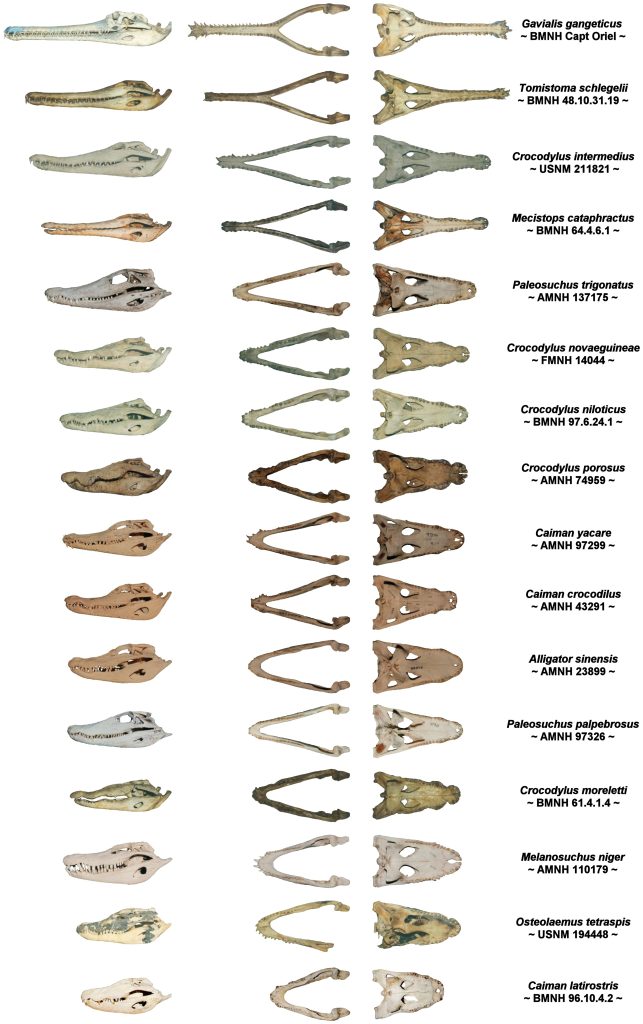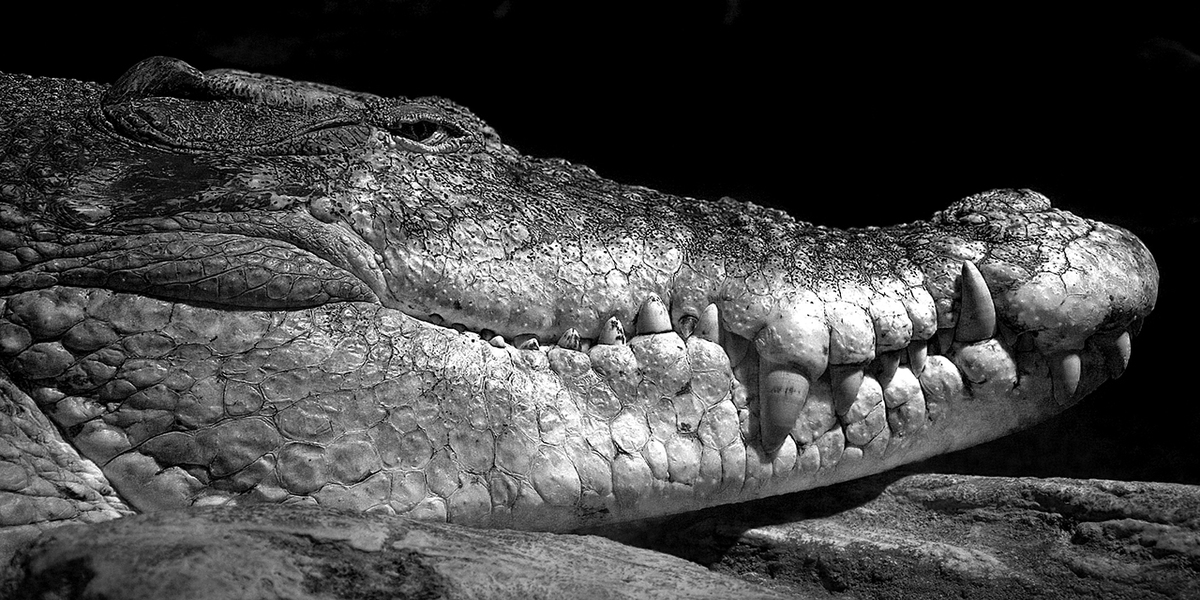Crocodiles have been an apex predator since the age of the dinosaurs, and there is no questioning what is keeping them at the top of the food chain: their jaws. A crocodile’s jaw is capable of snapping shut on their prey with extremely large forces. In fact, the American Saltwater Crocodile’s bite force is the strongest of all measured animals on the planet, weighing in at 3,700psi!
The question is: what attribute of the crocodile contributes most to this bite force?
According to research, there is no correlation between the shape of a crocodile’s snout and its bite force. Rather, the most important factor in a crocodile’s bite force is actually body mass!
If bite force is controlled by body mass, then why are there various shapes and sizes of jaws in different species of crocodiles? For instance, the American Saltwater Crocodile has a longer, narrow snout while the Broad-Snouted Caiman has a broad, short jaw shape. If each of these crocodiles were of a similar body mass, they are expected to experience the same amount of bite force. However, a long and slender jaw is known to be experience higher stresses due to its the force being exerted at a large distance away from its hinge. How is a long and narrow jaw able to withstand the same force as a short and broad jaw? The answer lies in the crocodile’s choice of prey.

Crocodiles with short, blunt jaws tend to choose larger, tougher prey. This can be explained by the advantages and disadvantages of the jaw design. A study examines how the jaw experiences less stress due to applying the bite force being exerted at a shorter distance from its hinge. Therefore, it is capable of inflicting a large bite force on tough prey with no damage to its bone structure. However, this comes with the price of experiencing high drag forces and slower speeds while hunting. These types of crocodiles also shake and twist (rotate their entire body) their prey, so their snout shape must be designed to withstand these types of forces as well as the biting force.
Crocodiles with long, narrow jaws often consume small, agile prey. Researchers found that a crocodile with a long, narrow jaw will experience a large amount of stress for the same biting force as a crocodile of the same body mass with a short, blunt jaw shape. Therefore, they are unable to twist and shake large prey and cannot bite through tough prey without risk of damage. Despite this, the jaw design presents the advantage of having a small amount of drag force acting on it. Crocodiles with this type of jaw have greater reach and higher tip velocity, and they use this to their advantage by implementing rapid sideways sweeps during hunting.
While two crocodiles of similar body mass will experience the same bite force, the shape of their jaws dictates the type of prey they consume. You can expect the Broad-Snouted Caiman to be happy to eat through the shell of a turtle, while an American Saltwater Crocodile’s jaw would much prefer catching a small fish.
Featured photo, ‘Crocodile’, from t0mweb on flickr.
